Video: Planting Fall Crops for Harvest with Garden Answer
Fall crops already? That’s right! Join Garden Answer and get some great ideas for food crops in the upcoming season.
Featured Products
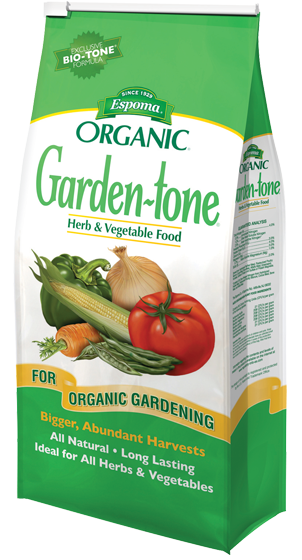
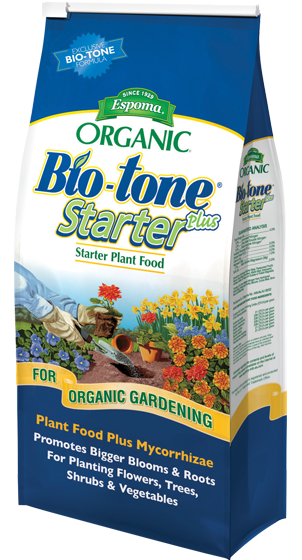
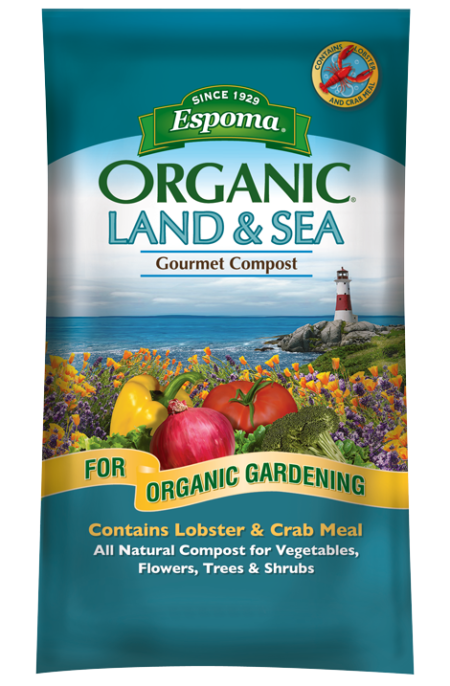
Fall crops already? That’s right! Join Garden Answer and get some great ideas for food crops in the upcoming season.
Featured Products



A little vitamin boost from Bio-tone Plus before amending your soil is key when planting up a fresh tomato path. More great tips from Bloom and Grow Radio in the full video!
Products Featured


We’re thrilled to jump back into our Q&A series where we highlight the talented folks who are working hard behind the scene to make Espoma so great. Today we’re shining the spotlight on Dave Jackson, Vice President of National Accounts! We’ve been lucky enough to have him with us for just over three years now during which he’s continually impressed his colleagues and customers alike.
Let’s learn a bit more about Dave’s day-to-day life and his favorite Espoma products! Keep reading to find out his secret is for the ultimate curb appeal.
Q. What’s your favorite part of your job?
A. My favorite part of my job is presenting new products and merchandising ideas to customers and helping them grow their business.
Q. How has COVID-19 affected your day-to-day?
A. Interacting face-to-face with customers has been replaced with virtual meetings and digital presentations. I miss the customer interaction and store visits.
Q. What about your personal life? Any new hobbies and/or habits helping to pass the time?
A. It has been nice to spend more time with my kids who are taking classes from home. They can’t escape!
Q. What are you most looking forward to when the world gets back to normal?
A. I look forward to visiting my parents and family and getting to a few favorite restaurants.
Q. Tell us about your personal garden, yard, or plants.
A. I maintain my own lawn and landscaping, including a rock garden and a few containers on the patio.
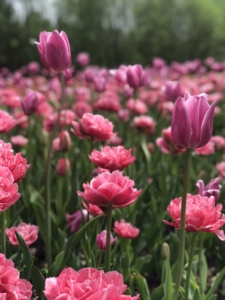
Q. What is your top gardening tip?
A. Make sure you get your kids to help when it’s time to do the mulching!
Q. What’s one Espoma product you couldn’t live without?
A. I’m amazed by how well my flowers look soon after using Bloom! Liquid Plant Food. It’s quick and easy.
Q. What do you enjoy most about caring for your gardens?
A. I enjoy trying different containers of annuals, perennials, and herbs. I also enjoy watching one of my kids mow the backyard!
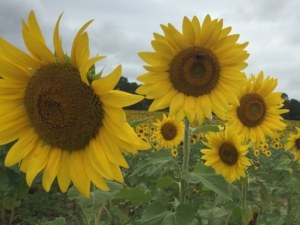
Q. What made you want to enter the gardening industry?
A. I started my career with a seed company and haven’t left the industry since. It’s a great group of people!
Q. What made you want to work at Espoma?
A. I’ve always admired Espoma’s great products and packaging and jumped at the opportunity to join the team.
As always, we’re proud to have such loyal, hard-working employees that keep our company running. Stay tuned to learn more about the great folks behind the brand at Espoma.
Featured Products:
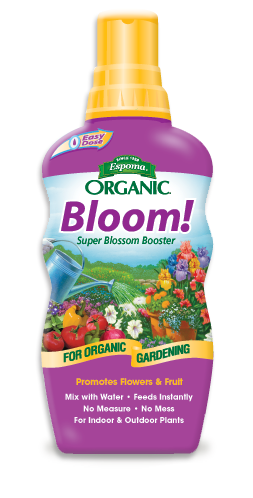
Here at Espoma, our products are only as great as the team behind them. That’s why we’re excited to begin our Q&A series where you’ll get to learn a bit more about the talented folks behind the brand. We want you to see for yourself just how our company is comprised of hard-working people who genuinely care about our customers and everything plant- and garden-related!
First up is our Southeast Territory Sales Manager, Bonnie Satterthwaite. Bonnie has been with us for 14 years! We’d love to tell you about all her and the amazing things she has done for Espoma over the years, but we figured it would be best to hear it straight from the source. So, we sat down with Bonnie and let her put it in her own words.
Q: What’s your favorite part of your job?
A: Developing relationships and often becoming friends with our customers. And, of course, the opportunity to visit all of the fabulous garden centers in my area.
Q: What about your personal life? Any new hobbies helping to pass the time?
A: I purchased a rowing machine, but have yet to leave the dock…
Q: Tell us about your personal garden, yard, or plants.
A: I truly love gardening, and I know that passion resonates with my dealers. I maintain a floral cutting garden, a white/night garden, over 150 hydrangeas, and a hydrangea graveyard.
Q: What is your top gardening tip?
A: Never think you are finally finished and get rid of non-performers!
Q: What’s one Espoma product you couldn’t live without?
A: Without hesitation, BioTone Starter Plus. I do not plant without it. I have seen what it does for plants and transplants. I have seen unsolicited “with and without” trials by garden centers who use the “trust and verify” model. It is an amazing product. I am proud to recommend all of the Espoma line, because of our dedication to quality, the environment, and the safety of children and pets.
Q: What is your favorite aspect of gardening?
A: My favorite aspect is certainly the seasonal outdoor garden beds — just tending the garden beds and the joy of watching things flourish. There comes, for me, great satisfaction from the hard work — and I find the whole process relaxing. I love a morning and late evening stroll around the garden.
Q: What made you want to enter the gardening industry?
A: I was a stay-at-home mom and my sister was a grower for a local garden center. She asked me to come and help her plant 10,000 geraniums during school hours. The owner of both the growing operation and garden center told me I talked too much to be in the greenhouse and asked if I would come to his garden shop during the busy season and talk to customers. And there you go….
Q: Tell us what made you want to work at Espoma and what makes it a special place to work?
A: I met Jeremy Brunner on a garden center bus tour and, unbeknownst to me, my Espoma adventure was about to start. I was very happy at my previous job, but Jeremy’s passion and vision for the growth of the Espoma company was something that was missing from my previous job. I wanted to be a part of something that I could see and feel was going to be spectacular. Espoma cares just as deeply for their work family as they do for their products. So, for me, there was just no question on where I wanted to continue my career.
We were so fortunate to have Bonnie join us when she did — and we hope to keep her around for as long as possible! At Espoma, we definitely pride ourselves on being able to congregate hard-working employees who genuinely enjoy the gardening industry the same way our loyal customers do. Thanks for all you do, Bonnie!
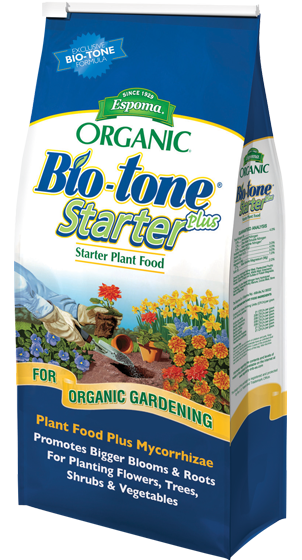
With Memorial Day in the rearview, summer is officially here once again — and while we wish that meant nothing but sunshine and barbecues, bugs seem to always make an appearance this time of year. But did you know there are ways to avoid getting bitten and bugged every time you want to relax outside?
The fragrance of certain plants can actually block the receptors insects use to find us. It’s just another great reason to get a garden going in your backyard, around your patio, or anywhere you like to enjoy fresh air. All you really need to sustain these helpful plants is some good starter fertilizer like Espoma’s organic Bio-tone Starter Plus and to make sure they’re fed every two to four weeks with Grow! to ensure they get the proper nutrients.
So, if you’re getting some unwanted guests during those summer cookouts, try planting some of these simple staples.
Lemon Grass
Did you know many mosquito repelling candles and sprays are made from citronella oil? Lemon grass naturally produces this ingredient and doubles as a beautiful grassy plant for walkways and around tables. Alternatively, you can plant it in its own pot and use it wherever your local mosquitos tend to congregate.
Other Lemon-Scented Plants
Similar to lemongrass, other plants that give off a strong citrus fragrance — like lemon-scent geraniums, lemon thyme, and lemon balm — work well to repel bugs. These plants use their fresh scent to keep their leaves from being eaten — and in turn can help you keep from being bitten.
Lavender
Despite lavender’s sweet smell being quite popular among people, most insects hate it. Keeping this plant near seating areas will help ward away mosquitos and other pesky flies. A great thing about this plant is that you can use it fresh or dried to get the job done — or even just use the extracted oil. This way you have different options on how you want to decorate while still keeping the pests at bay.
Rosemary
Rosemary is a great addition to your cookout. Throw a few sprigs on the grill as you’re cooking to release its fragrance into the air. It’ll smell wonderful to you and your family but make the bugs fly in the other direction.
Basil
Basil is another herb that will keep the mosquitos away. It’s also toxic to mosquito larvae, so placing this plant near water can help discourage mosquitoes from laying eggs.
Mint
Mint’s fragrance is great at repelling pests like ants, mosquitoes, and even mice. It’s also always a nice addition to any dish, so incorporating it into your barbecue can be beneficial in more ways than one.
Garlic
If cabbage moths are just as pesky as mosquitoes in your backyard, garlic can be your saving grace. When crushed, the garlic bulbs release allicin — an enzyme that produces that classic garlic smell. Your local pests will definitely not enjoy your garlic breath, so go ahead and use it up all weekend long.
Any and all of these plants can be used purely to keep the bugs away, but they’re also beautiful decor for your outdoor area. Be sure to keep up with them all season long in order to reap the benefits whenever your cookouts come around.
Here are some of our other blogs we thought you might enjoy.
BUG OFF – Plants That Repel Mosquitoes
Perk Up Summer Containers with Stunning Annuals
Growing Scrumptious Tomatoes in Easy Containers
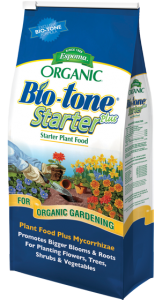
It’s not too hard to walk through the yard in mid-summer and pick enough flowers for a vase. But, oftentimes, gardens are less showy in autumn. Heare are five winners you should look for now and plant next spring. All five varieties can be grown from seed for pennies. They will liven up your fall bouquets and your fall garden next year. Best of all, three of them dry beautifully and will last all winter. Don’t forget to feed your flowers Espoma’s liquid Grow! fertilizer for the best possible harvest.
Chinese Lanterns
Chinese lanterns, sometimes called Japanese lanterns, have bright orange seed pods that look like puffy lanterns hanging from their stems. These dry beautifully and may be used in arrangements for many months, even years. Their vivid orange color makes them ideal for all things Halloween. You can sow the seeds indoors in the spring or outside directly in the soil. They are vigorous growers and can be grown in pots to keep them in check.
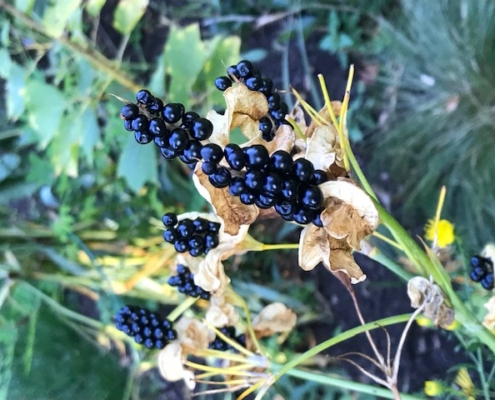
Blackberry Lily
This is a twofer. Blackberry lilies have beautiful, bright orange flowers with deep orange freckles on tall graceful stems. After they bloom, seed is produced inside puffy capsules. In late summer the capsules break open and you’re left with a cluster of black seeds that looks exactly like big, fat, juicy blackberries. The glossy berries look beautiful in fresh or dried arrangements. Together with the Chinese lanterns, you’ll have the ultimate Halloween combination.
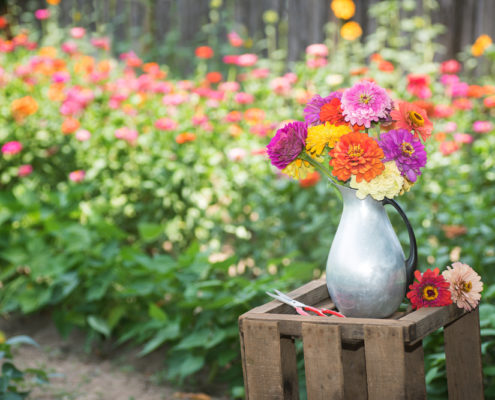
Zinnias
Zinnia’s have been garden favorites for hundreds of years because they are so easy to grow from seed and come in so many different colors, shapes, and sizes. They’ll start flowering in mid-summer and bloom until frost, attracting butterflies and hummingbirds. They make outstanding cut flowers and long-lasing bloomers in the garden. They like good air circulation and always water at ground level, wet leaves can lead to mildew.
Money Plant
Money plant, also called the silver dollar plant is not the same as the house plant. Its botanical name is Lunaria. This lovely annual blooms in spring with bright pinkish-purple flowers but don’t cut them. After they bloom, they develop an oval seed pod. Toward the end of summer, the pod becomes papery and if you carefully rub them the husks and seeds fall off and you are left with a stem of almost transparent, silver dollar-sized disks that look like parchment. They are so unusual and because of their neutral color, they blend well in any bouquet. Throw the seeds back where they came from for and you’ll get more the next year.
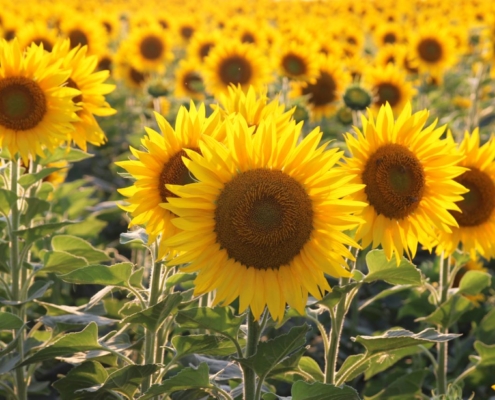
Sunflowers
Annual sunflowers now come in a wide range of colors from yellow, orange and bronze to ruby red and even white. They also come in a variety of heights from six feet tall to shorter branching varieties to dwarf varieties that reach just a foot or two. They are all easy to grow from seed and are especially fun to grow with kids because they grow so fast. Cut them early in the morning, when the flower petals are just beginning to open for the longest lasting cut flowers.
Foraging
If you don’t have enough varieties of fall blooming flowers, foraging may be an option. Foraging isn’t legal everywhere but if you have friends or family with some property ask if you could cut some wildflowers. Goldenrod, asters, and tansy can add beautiful and flare to a cut flower bouquet. Think of berries too. Many shrubs have fall berries and many roses offer hips. Don’t forget about adding dried grasses, hydrangeas and foliage with fall color. The most important thing is just to be creative and have fun. Mother Nature already made the flowers beautiful, so you can’t miss.
Here are links to other blogs we hope you’ll find interesting.
Nature Never Goes out of Style – Transition into a Fall Cutting Garden
Espoma Products – Grow!

Danger could be lurking anywhere when you’ve got kids and pets. That’s why parents do their best to baby-proof and petscape. And when you’re a plant parent, the last thing you want to think about is your real babies or furbabies snacking on your plant babies.
Whether it’s because they’re poisonous or prickly, some plants are just not safe for consumption.
Luckily, many plants are non-toxic and safe for the whole family to enjoy.
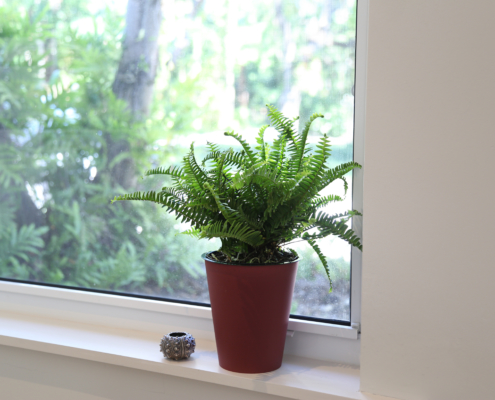
Boston Ferns
Not only are Boston ferns safe to have around pets and kids, but they also clean the air every minute of the day. Studies from the US Environmental Protection Agency (USEPA) have found that levels of indoor air pollution can be two to five times— and in some cases 10 times — more polluted than outdoor air. Feed ferns every two to four weeks with Espoma’s liquid Indoor! fertilizer to keep plants growing.
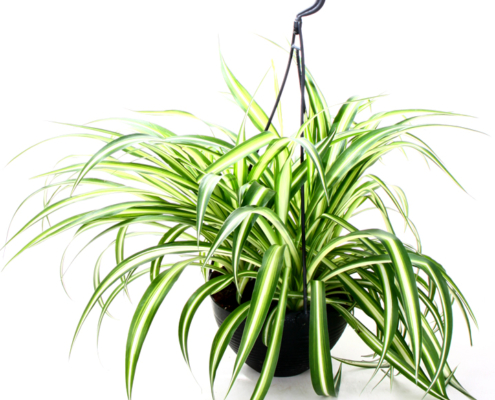
Spider Plant
This 70s mainstay and easy care plant is one of the safest you can find. Spider plants also great for teaching small children about plant propagation. Just snip off the babies and transplant into Espoma’s organic potting mix to create more plants.
Christmas Cactus
With their flat green leaves, stunning blooms in pink or lilac and longevity, Christmas cacti can sometimes be family heirlooms handed down from one generation to the next. To trigger blooming, these plants need darkness for at least 14 hours a day and sunlight between 8 to 10 hours a day for six weeks. You can cover your cacti if your indoor lighting is bright to create the needed rest period.
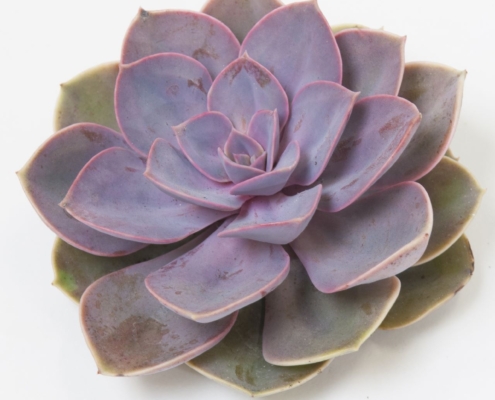
Echeverias
The entire echeveria family is safe for pets and children, although we still don’t advise eating them. This desert native comes in a variety of colors and does best in dry conditions. Echeveria should be watered only once it has dried out. For optimal results, place echeveria in full sun and ensure the soil is well drained. Use Espoma’s Cactus! liquid fertilizer to give succulents the optimal amount of nutrients.
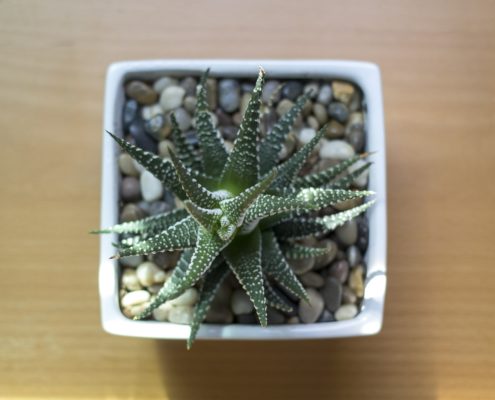
Zebra Plant
Another favorite of succulent lovers, this striking plant gets its name from the horizontal stripes covering its leaves. Growing about 5” tall and 6”wide, the zebra plant is tidy, contained and a perfect addition to any small space. Zebra plants require a moderate amount of sunlight and water.
African Violets
These stunners are known to bloom continuously, even throughout the darker months of winter. Place them throughout the house to enjoy their colors and velvety texture throughout the year. Once you get in a regular routine of taking care of African violets, you’ll find they’re very easy to grow. All of their basic needs need to be met though, or they won’t bloom. Give them the right temperature, light and a good feeding with Espoma’s Violet! liquid fertilizer, and you’ll be blooming in no time.
Safety First
Tiny hands and paws often find their way into the dirt and end up in the mouth. Picking non-toxic plants is a step in the right direction toward keeping your little ones safe, but go one step further by choosing organic products and soil for your plant babies. Plus, it’s healthy for your plants, and the planet, too.
Espoma Products for Happy Houseplants
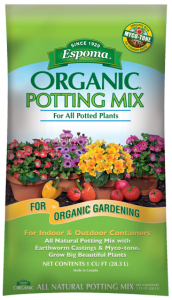
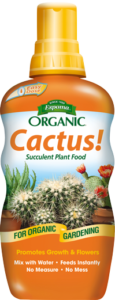
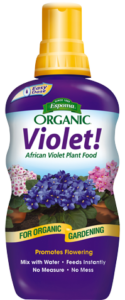
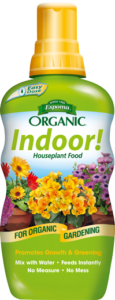
Fall is a great time to plant. First of all, the cooler temperatures make it much more appealing to be outside. Secondly, fall plant sales are the best. Many garden centers offer deep discounts because they don’t want to overwinter plants. Take advantage of these deals to add some spice to your yard and garden.
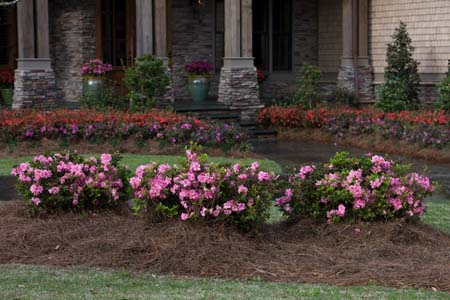
Star of the Show
Azaleas are some of the most beautiful and popular shrubs you can buy. The plants are covered with delicate blooms in spring and summer and many have attractive fall color too. In the right location, they are easy to grow and they’ll soon become the stars of the garden.
Soil and Light
Azaleas are acid-loving plants. That means that they prefer soil with a low pH. Fertilizers like Espoma’s Holly-tone were developed especially for acid-lovers. You apply it once in the spring and again in late fall at half strength. Well-drained soil is also a must. They do best in bright shade. Too much sun can burn the foliage and too little will result in poor flowering.
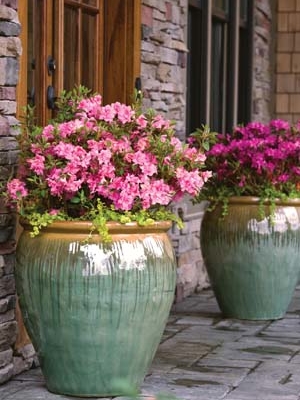
Planting with TLC
Azaleas are shallow-rooted shrubs meaning the roots don’t go deep looking for water. Adding some compost to the soil when planting will help hold moisture around the roots. It’s also a good idea to add Bio-tone Starter Plus to the planting hole. It’s a great starter fertilizer to help make sure your new plant gets established quickly. Water deeply after planting.
Mulching
Fall isn’t the best time to mulch. It can hold warmth in the soil instead of letting the temperatures gently drop, encouraging the plant to go into its natural dormancy. Add a layer of mulch next spring after the soil has warmed up. Bark, pine needles and leaf mold are all good choices.

Pruning
Generally speaking, azaleas don’t need to be pruned unless you are trying to reduce their height. In that case, prune the shrubs back after they flower. You can remove dead or damaged branches any time of the year. It is also a good idea to deadhead the flowers once they have finished blooming. That way the plant can use all of its energy to grow bigger and stronger instead of producing seed. Be careful when you snap off the old flowers as the buds for next year are right below them.
Here are some other blog posts we hope you will find interesting.
Step-by-Step: Prep the Garden for Winter
How to Plant Colorful Flowering Shrubs: Azaleas and Rhododendrons
Espoma Products
Terrariums are beautiful, fun to make and easy to care for. Our favorite Brooklyn plant expert, Summer Rayne Oakes, guides us through the process step-by-step in this episode of Plant One on Me.
Summer covers which plants, tools, containers and soil mix you’ll need. Plus, how to water, the number one reason people kill plants.
If this terrarium seems too large to start with, go with a smaller version.
You don’t need a green thumb for this DIY project, promise.
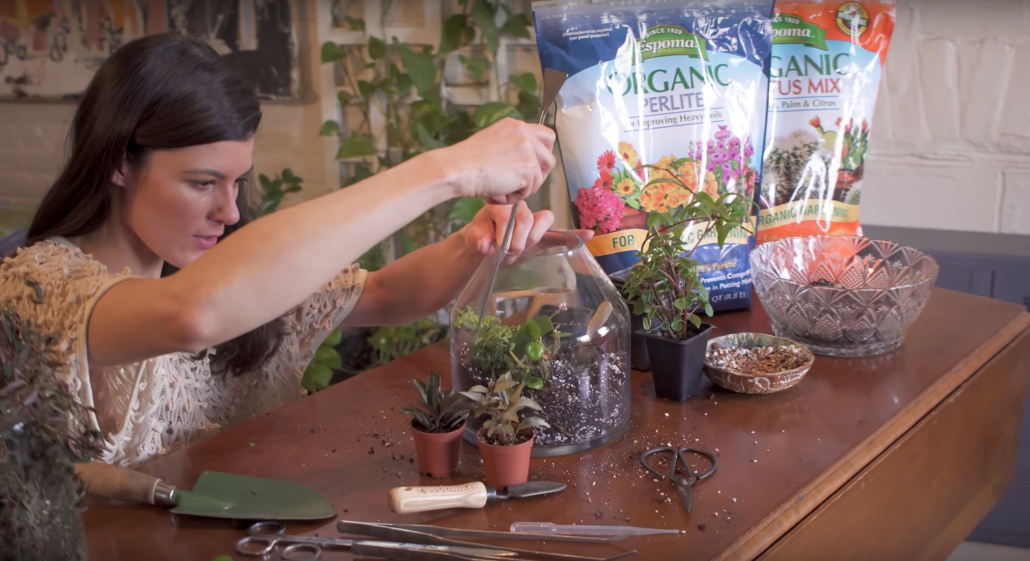
Getting Started
First of all, choose a glass container. It’s easiest if the container is big enough to fit your hand inside. Next, choose plants that have the same kinds of light and water requirements. Check the plant tags to make sure they’ll be compatible. Generally speaking, terrariums are best in bright, indirect light. Full sun can be magnified by the glass and burn foliage. Base the container size on the number of plants you’d like to include.
Tools
Summer uses a set of aquarium tools for her terrariums. It’s a clever idea because they are extra-long. Having said that, it isn’t really necessary to buy this type of set when starting out. A long pair of chopsticks does a great job. She also uses a spoon and a narrow garden trowel. A watering can with a thin spout is handy to direct the water.
Soil Mix
The soil for terrariums needs to be a light, free draining mixture. Espoma’s organic Cactus Mix combined with perlite makes the perfect blend. If plants are small you can start with a drainage layer of an inch or so consisting of small rock and or charcoal. In this case, she didn’t use a drainage layer because the plants were relatively large and would have rooted into the drainage layer too quickly.
Planting
Add an inch or two of the soil mixture to your glass container. Play around with the plants until you have an idea of how you’d like them to look. Every plant won’t be blooming all of the time so choose ones with different textures and foliage to create the terrariums subtle beauty. Plant around the edge first, adding soil around the plants as you go. Plant the centerpiece last.
Watering
Terrariums create their own humidity which means they’ll need to be watered less frequently than houseplants in pots. Water sparingly and keep an eye on them. If plants seem to be wilting, water them. As time goes by, you’ll find the right watering schedule for your terrarium. Once every two weeks is about average.
Plant List
Here is a list of the plants Summer used in this video:
More Information
Here are links to other videos and blog posts we think you may find interesting:
Instead of carrying around a rabbit’s foot or a four leaf clover, try adding jade plants to your home for good luck! These plants signify wealth and prosperity, so they make the perfect addition to offices and homes. Like most succulents, they’re low-maintenance and easy to care for.
You don’t need to be lucky to find success, just follow these simple care instructions for your jade plant.
Water
Instead of watering your jade plant on a schedule, water as needed. If the top inch of the soil is completely dry, it’s time to water. Depending on the amount of sun and the room temperature, water needs may vary. If your jade plant starts to lose leaves or develop sun spots, it’s trying to tell you it’s thirsty. Water just enough to moisten the soil.
As with all houseplants, avoid over watering as it can lead to root rot and other diseases.
Sunlight
Jade plants love sunlight. Just four to six hours of direct sun a dat promotes healthy growth also protects against diseases. Place your jade plant on a sunny windowsill at work or at home.
Certain varieties of jade, typically ones with variegated leaves, don’t need as much sun. Look for a variety than can thrive in indirect sunlight to place on your desk or coffee table. Jade plants love mild temperatures, anywhere from 50 to 75 degrees Fahrenheit will do.
Soil
Jade prefers a well-draining soil to avoid becoming water logged. Espoma’s Organic Cactus Mix is specialized for succulents. It promotes healthy root growth with its optimum aeration and drainage. Clay pots are great for jade plants because they wick away any excess water and help protect the plant from over watering damage.
Fertilize
Fertilize your jade plant regularly to keep it healthy and growing, try Espoma’s Cactus! Liquid plant food for succulents.
With just a little care, your new jade plant will bring you plenty of luck and prosperity!
Want to be creative with succulents? Try this DIY paint can planter for succulents.
